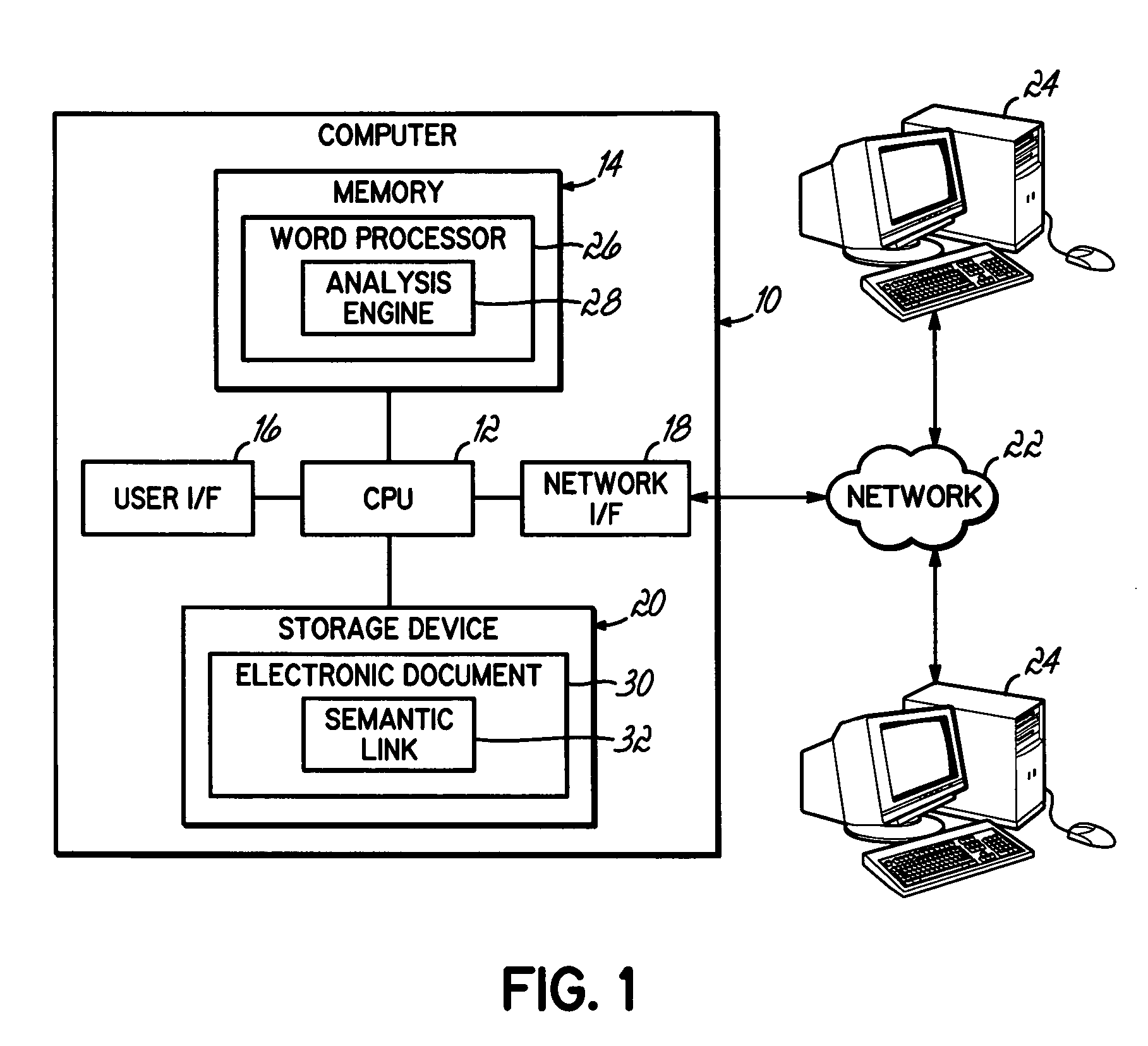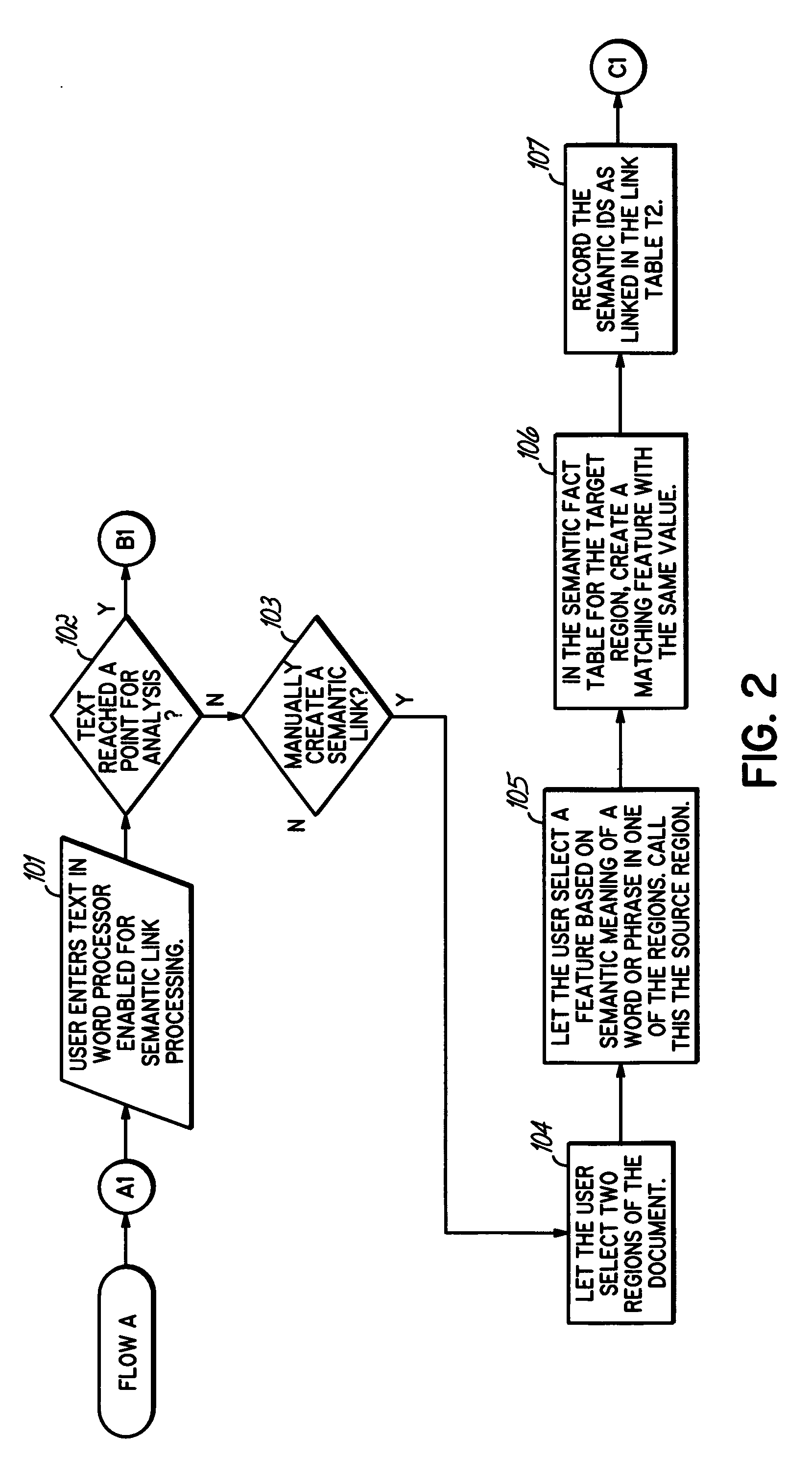Logic checker using semantic links
- Summary
- Abstract
- Description
- Claims
- Application Information
AI Technical Summary
Benefits of technology
Problems solved by technology
Method used
Image
Examples
Embodiment Construction
[0020] The herein-described embodiments utilize semantic links to link together logically-related content in one or more electronic documents for the purposes of maintaining semantic consistency between the logically related content. The logically-related content typically includes one or more linguistic expressions, i.e., expressions comprising multiple words from a human readable language, rather than simply numerical data, which conveys a particular meaning to a reader. A word is typically understood by one skilled in the art as a combination of sounds or phonemes (or textual representations of such sounds or phonemes) that conveys a particular meaning within the context of a language.
[0021] Semantic links are used to assist in the automated detection of semantic inconsistencies between logically-related content. A semantic inconsistency, within this context, arises when the meaning of certain content, e.g., a linguistic expression, becomes incompatible with other content with w...
PUM
 Login to View More
Login to View More Abstract
Description
Claims
Application Information
 Login to View More
Login to View More - R&D
- Intellectual Property
- Life Sciences
- Materials
- Tech Scout
- Unparalleled Data Quality
- Higher Quality Content
- 60% Fewer Hallucinations
Browse by: Latest US Patents, China's latest patents, Technical Efficacy Thesaurus, Application Domain, Technology Topic, Popular Technical Reports.
© 2025 PatSnap. All rights reserved.Legal|Privacy policy|Modern Slavery Act Transparency Statement|Sitemap|About US| Contact US: help@patsnap.com



